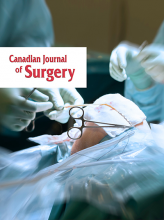Physician burnout is the new catch phrase. Recognized as a problem for years, burnout has now become more relevant. It is the sheer volume of cases that has beccome a threat to the medical profession. Annually, about 400 physicians take their own lives in the United States. We do not have hard numbers for Canada.
The Mayo Clinic published its survey-based work on burnout in 2016.1 It reported that physicians with at least 1 symptom of burnout had increased to 54% from 46% the previous year. The Canadian Medical Association released data in the last year on the Canadian experience.2 One in 3 physicians reported signs of depression. Residents seemed more at risk (95%) of depression, but were also more likely to report it. In Quebec, the PAMQ (Quebec physician assistance program) has existed since 1990. New cases are threatening to overwhelm the program. Last year there was a 20% increase in new cases among specialists and 12% among family physicians.3
The complaints to the PAMQ are varied, but seem to be related to a number of environmental factors. Doctors feel they are confined, with no viable exits, leading to early retirement or shutdown of their practices for an indefinite period. They also claim that changes in the system have left them overloaded in a dysfunctional workplace and without control. The most affected are younger than the average physician (43 v. 52 yr).2,3
We have seen active demeaning of physicians in the media by government spokespeople as well as increasing rationing of care by ministries of health and hospital administrators. The rationing has government origins, but the physicians are perceived as the culprits. There are complaints of time pressure, declining pay and umpteen unproductive paperwork tasks required by administration that either don’t improve or actually inhibit patient care. Physician-oriented investigations by peer regulatory bodies and lawsuits are also a huge stress factor. And electronic health record migration has not facilitated patient care.
Certainly, medical graduates are under more pressure than ever to adapt to a new work environment, and debt load and job uncertainty from lack of resources are enough to cause concern. But what has made this generation of physicians more prone to burnout? It may be just a heightened sensitivity to hardship combined with a decreased stigma for speaking out. But that would mean the environment is about the same, with a more sensitive measuring stick.
Work conditions have improved. Residents no longer exit a 5-year program of 1 in 2 in-house call. New staff have support programs and generally are not working more hours than their predecessors. However, patient care has become more complex, with more tests required and attendant comorbidities. But limited employment opportunities and residency spots in specialties combined with a need for a different work–life balance has made working more pressure filled. Unfortunately, burnout requests seem to have funny parameters in some cases. I have seen staff claim they are too tired to do call but have no problem increasing their elective lists. Ideally, like with other disabilities, we need more objective qualifications for diagnosis and treatment of burnout. Burnout is a real problem that needs better definition.
Currently, the plan for therapy varies greatly among cases, with no agreed-upon recovery program. Treatment protocols are not unified and definitely need to be. Like all other epidemics, we need to recognize the importance of physician burnout and meet the problem head-on. However, all these issues combined seem to indicate that in the future, we are going to have to train more physicians to meet our needs.
Footnotes
The views expressed in this editorial are those of the author and do not necessarily reflect the position of the Canadian Medical Association or its subsidiaries.
Competing interests: E.J. Harvey is the chief medical officer of Greybox Solutions, the co-founder and head of medical innovation of NXTSens Inc., the co-founder and chief medical officer of MY01 Inc., and the co-founder and director of Strathera Inc. He receives institutional support from J & J DePuy Synthes, Stryker and Zimmer, and he is a board member of the Orthopedic Trauma Association and the Canadian Orthopaedic Association.









